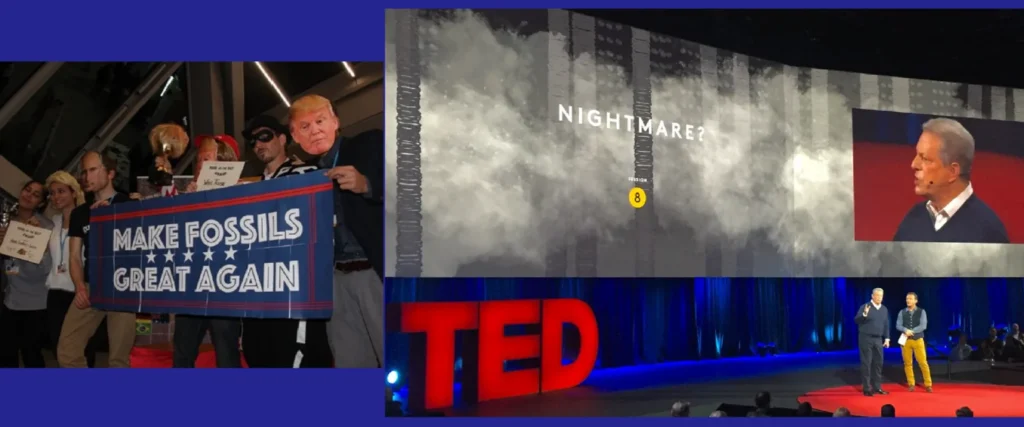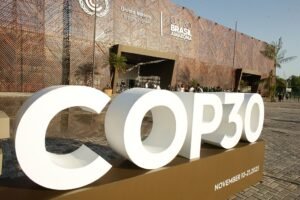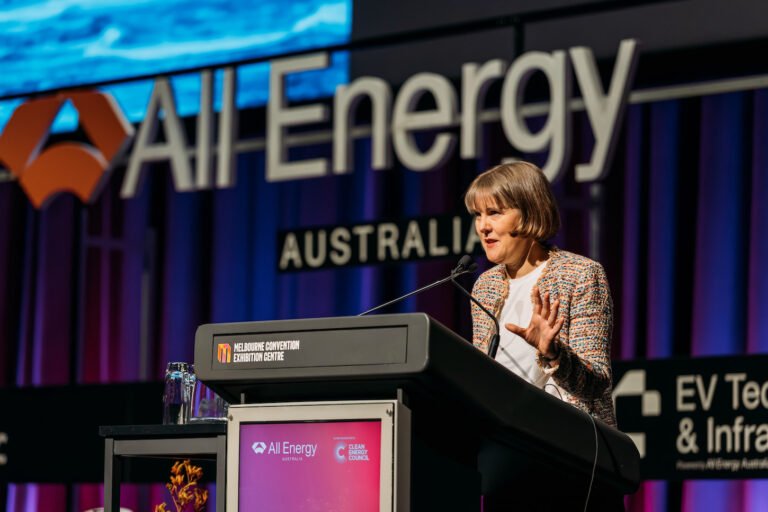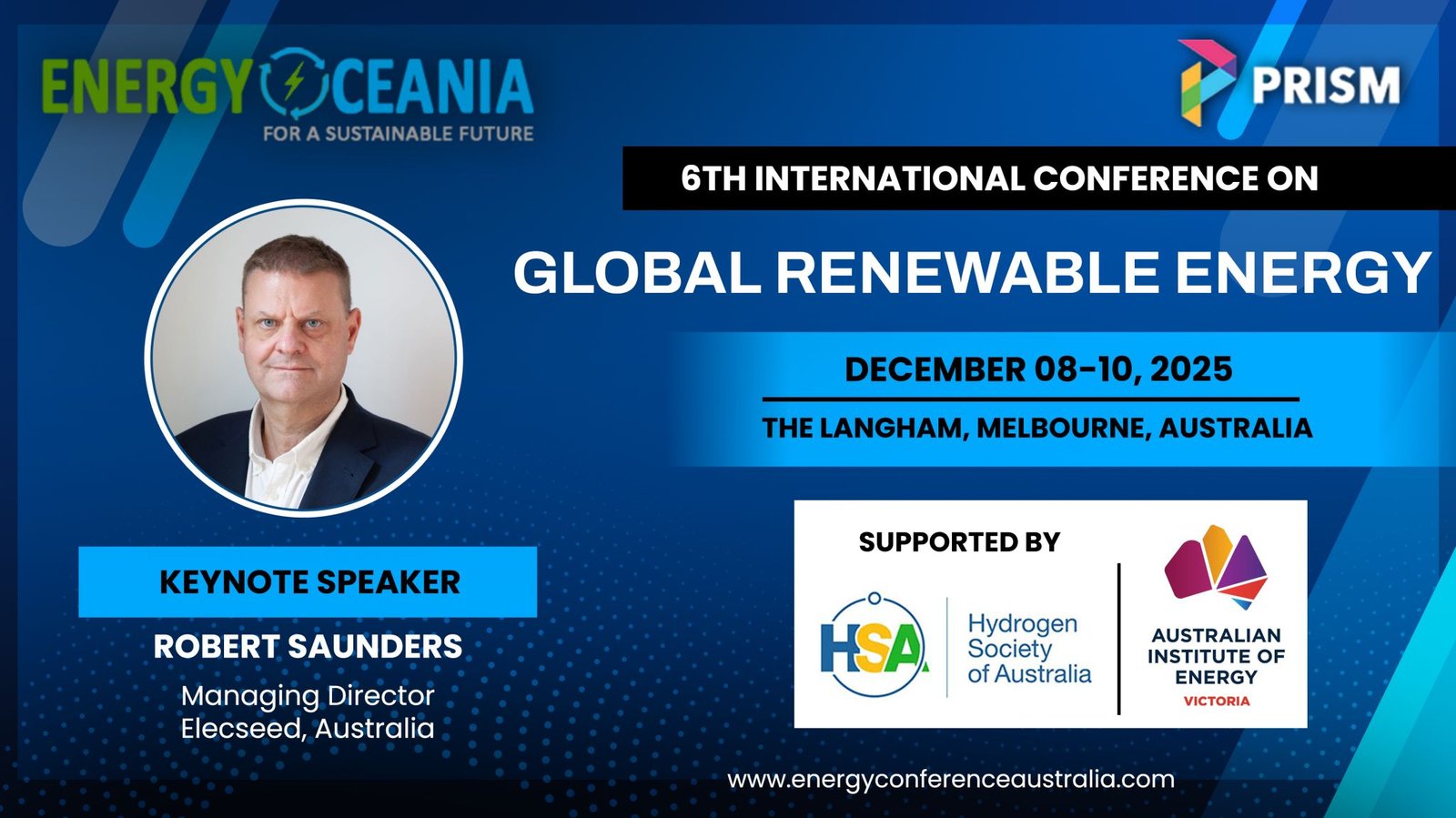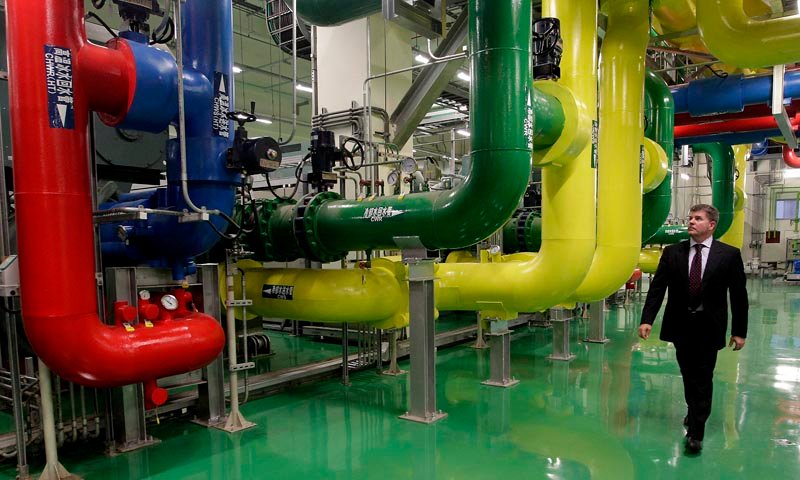IMAGE: AL GORE: jurvetson CC BY 2.0. TRUMP John Englart (Takver) CC BY-SA 2.0.
Political will is the problem. Creating a bureaucratic climate emergency. It’s easy to change light bulbs – but to change the laws and policies is the real solution.
The U.S. presidential election is scheduled for November 5, 2024 with an estimated non-mandatory turnout of 60% to 66% of eligible voters. Typically, younger voters and minorities often have lower turnout rates, while older, more affluent populations tend to vote at higher rates. This is changing.
With a population of 334 million people, many young people prioritize climate change as a critical issue of the Paris Agreement and activisms on environmental protections and policy. While US minority immigrants’ climate change concerns are directly related to low socioeconomic factors of low-income neighborhoods that face greater risks from extreme weather events, flooding, and air pollution- while policies that promote green jobs in renewable energy can be viewed favorably, as they may provide pathways to employment and economic advancement.
Al Gore An Inconvenient Truth- Stop using the sky as an open sewer. The crises is getting worst. Faster than us employing the solutions. But the cost reduction of renewable energy in the last decade – particularly batteries at 82% – is becoming more affordable supported by government incentives and funds.
The Good News.
Last year, 87% of all the new electricity generation installed around the world was renewables. It is the cheapest form of energy electricity in the history of the world.
But the polluters are way better at capturing the politicians, than solutions.
Burning Gas, Oil & Coal accounts for 80% of Carbon Emissions, and taxes subsidise the burning of these fossil fuels. Political will is the problem creating bureaucratic climate emergency.
“Daily, 162 million tons of man-made heat-trapping-pollution goes into the thin atmospheric sheaf surrounding Earth”, Al Gore, April 2024. “This heat and energy input everyday builds up over hundreds of years, and now if released would be 750,000 Hiroshima bombs exploding, everyday”.
During Donald Trump’s presidency (2017-2021) of Fossil Fuel Dependency supported coal, oil, and natural gas production by prioritizing these policies. He withdrew from the 2015 Paris Agreement of 1.5% pre-industrial atmospheric temperature target; he expanded offshore drilling and lifted restrictions on oil and gas exploration in protected areas, such as the Arctic National Wildlife Refuge; supported infrastructure projects, such as pipelines (e.g., Keystone XL and Dakota Access), which were designed to facilitate the transport of fossil fuels; proposed cuts to funding for renewable energy programs and climate science research, redirecting resources towards fossil fuel initiatives; and rolled back numerous environmental regulations aimed at limiting greenhouse gas emissions, such as loosening restrictions on emissions from power plants and vehicles.
In the early 2000s, Robert F. Kennedy Jr., then a prominent environmental attorney who had recently been named one of Time magazine’s “Heroes for the Planet- opposed offshore wind, which continues today.
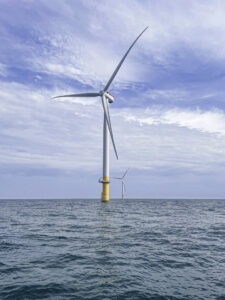
Credit: Coastal_Virginia_Offshore__Wind_22. BOEM-OPA CC BY-SA 2.0.
“It set back offshore wind over 20 years in the United States,” said Jim Gordon, the former CEO of Cape Wind. “They created such a brouhaha and so much fear over the technology and the impacts, which have proven to be unfounded.”
Two decades later, Kennedy—who recently endorsed former President Donald Trump, a candidate who frequently mocks wind power—says he opposes all offshore wind. (Inside Climate News)
The U.S. is one of the largest emitters of greenhouse gases (GHGs) globally, particularly carbon dioxide (CO2) from fossil fuel combustion, contributing to global warming and global climate targets and agreements, such as those outlined in the Paris Agreement. Their high levels of consumption drive demand for goods and services that are produced with significant carbon footprints, affecting global supply chains and emissions.
However, the U.S. leads in research and development of clean energy technologies, including solar, wind, and energy efficiency. Innovations can drive global advancements and adoption of sustainable practices with export of green technologies, which can help other countries reduce their emissions and transition to cleaner energy sources.
Vice President Kamala Harris supports the Paris Agreement and The Green New Deal which aims to achieve net-zero greenhouse gas emissions by 2050, create millions of jobs in renewable energy, and promote environmental justice. While it has garnered significant support, it has also faced criticism and political opposition, leading to ongoing debates about its feasibility and implementation.
Al Gore’s Climate Reality Project is training 1000’s of climate leaders globally with offices in Australia-Pacific and Asia region. ,
The U.S. has a strong tradition of environmental activism that influences climate policy domestically and globally. The Climate Reality Project emphasis the importance of engaging in grassroots movements and local leadership in addressing climate change with communities, policymakers, and businesses in climate action. It focusses on climate change education, advocacy, and action by collaborating with local NGOs, governments, and community groups to implement projects and campaigns tailored to specific regional challenges.
The Climate Reality Project offices covers Australia, the Asia region and the Pacific.
The Australia office coordinates partnership outreach in the Pacific to Fiji, Tonga, Samoa, and Papua New Guinea- as well as New Zealand.
Asia Offices included India focusing on local climate issues and mobilizing community actions; Japan engaging with businesses and the public on sustainable practices Philippines addressing the impacts of climate change, especially on vulnerable communities.
References:
Wong, E. (2017). “Trump’s Withdrawal from the Paris Agreement: What It Means for Climate Action.” The New York Times. Retrieved from NYT
Baker, P. (2019). “Trump’s Fossil Fuel Agenda: A Break from the Past.” The Washington Post. Retrieved from Washington Post
Lindsay, B. R. (2018). “Trump’s Climate Policy: A Disaster for the Environment?” Harvard Environmental Law Review, 42(2), 333-360.
Graham, D. (2020). “The Trump Administration’s Energy Policies and Their Impact on Climate Change.” Environmental Politics, 29(5), 789-811. doi:10.1080/09644016.2020.1769512

